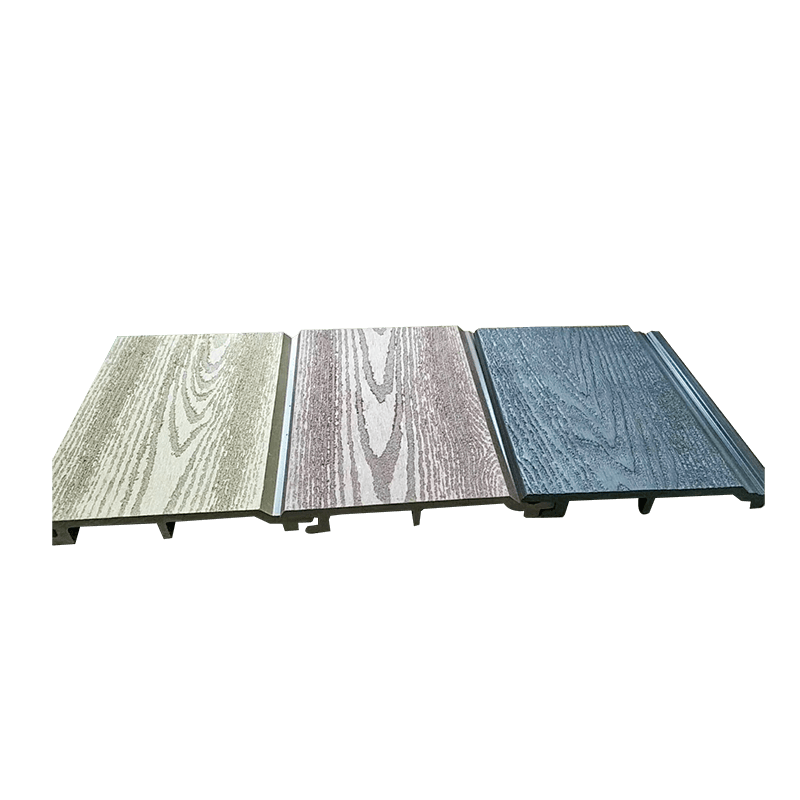Provide you with the latest enterprise and industry news.
As people pay more attention to environmental protection and sustainability, WPC wall panels (Wood Plastic Composite Wall Panel) as a new type of building material has gradually occupied an important position in modern architecture and interior design. WPC wall panels are made of wood fiber and plastic composite, combining the natural beauty of wood with the durability of plastic. They can not only meet people's multiple needs for beauty, function and environmental protection, but also provide longer service life and lower maintenance costs than traditional wood and plastic materials.
WPC wall panels are a composite material made by mixing wood fibers (such as sawdust, wood powder, etc.) and plastics (usually polyethylene or polypropylene) through a special process. This process allows the material to retain the texture and texture of wood in appearance, while improving the strength and durability of plastic. After the surface of WPC wall panels is treated, it can imitate the texture of various natural woods, providing a warm appearance similar to wood, but with stronger weather resistance and moisture resistance.

The main raw material of WPC wall panels, wood fibers, usually come from sustainable forest resources or recycled wood waste, while the plastic part is sometimes produced from recycled plastic. This makes WPC wall panels an environmentally friendly material that can reduce dependence on natural wood resources and help reduce the burden of plastic waste on the environment. The use of WPC wall panels can reduce the carbon footprint of construction projects to a certain extent, which meets the needs of sustainable development in the field of modern construction.
Compared with traditional wood, WPC wall panels have higher durability. It is not easily damaged by natural factors such as moisture, corrosion, and insect pests, so it performs particularly well in humid or high temperature environments. In addition, WPC wall panels do not require regular painting or anti-corrosion treatment, which reduces the subsequent maintenance costs. This allows WPC wall panels to maintain stability during long-term use, while also saving maintenance resources and costs.
WPC wall panels can imitate the texture and color of various natural woods, thus providing a variety of design options to meet different indoor and outdoor decoration needs. Whether it is simple and modern, retro classic or natural country style, WPC wall panels can provide ideal visual effects. In addition, WPC wall panels are also customizable to a certain extent, and can adjust the size, color and surface texture of the board according to customer needs, greatly expanding the creative space of designers.
WPC wall panels have excellent waterproof and moisture-proof properties due to their synthetic structure, and can effectively resist mildew and decay in humid environments. They are particularly suitable for humid areas such as bathrooms, kitchens and basements. Moreover, WPC wall panels are usually made of fireproof materials, and have good fireproof performance under certain conditions, which can improve the safety of buildings.
Compared with traditional wood, WPC wall panels have lower density and lighter weight, which makes transportation and installation more convenient. The installation process is simple and usually does not require professional tools and techniques, which reduces labor costs and construction difficulties. In addition, WPC wall panels can be flexibly matched with other building materials to meet different design needs.
WPC wall panels are widely used in interior wall decoration due to their unique beauty and high durability. It is not only suitable for residential use, but also commonly seen in interior design of commercial office buildings, hotels, restaurants and other places. Whether used as the main wall or as a decorative element, WPC wall panels can bring a warm and natural atmosphere.
In exterior wall decoration, the waterproof, UV-resistant and weather-resistant properties of WPC wall panels make them an ideal choice. WPC wall panels can withstand wind and rain without being easily damaged, so they are widely used in facade decoration, such as exterior wall decoration of commercial buildings, exterior design of villas, and exterior decoration of scenic huts.
The durability of WPC wall panels makes them an ideal choice for high-frequency use areas. For example, public places such as airports, shopping malls, and stations often use WPC wall panels as wall materials, which not only enhances the visual effect of the space, but also ensures stability and beauty in long-term use.
WPC wall panels are also suitable for outdoor gardens and landscape design. Its waterproof, moisture-proof and UV-resistant properties make it very suitable for outdoor environments such as terraces, fences, landscape huts, and parks. The natural wood texture of WPC wall panels can perfectly blend with the surrounding natural environment and add to the beauty of the landscape.
When choosing WPC wall panels, first of all, you need to pay attention to its environmental protection and the source of raw materials to ensure that it meets green environmental protection standards. Secondly, consumers should choose suitable colors, textures and sizes according to the actual needs of the project to ensure coordination with the overall design style. In addition, it is also very important to pay attention to product quality assurance and after-sales service to ensure that problems encountered during installation and use can be solved in a timely manner.
As an innovative building material, WPC wall panels have gradually become a popular choice in the field of architecture and interior design due to their multiple advantages such as environmental protection, durability and beauty. Whether in home decoration, commercial buildings or landscape design, WPC wall panels can provide ideal decorative effects and long-term use guarantees. With people's increasing attention to sustainable development and environmental protection, the application prospects of WPC wall panels will undoubtedly be broader.



 English
English Español
Español














